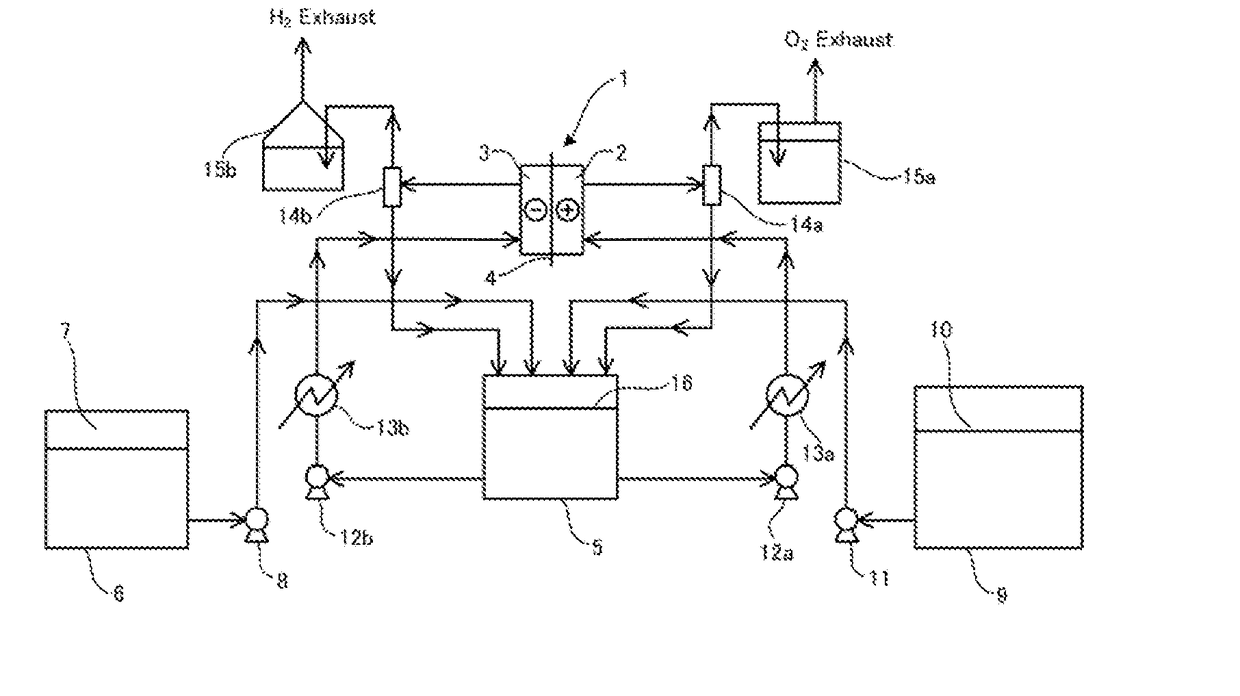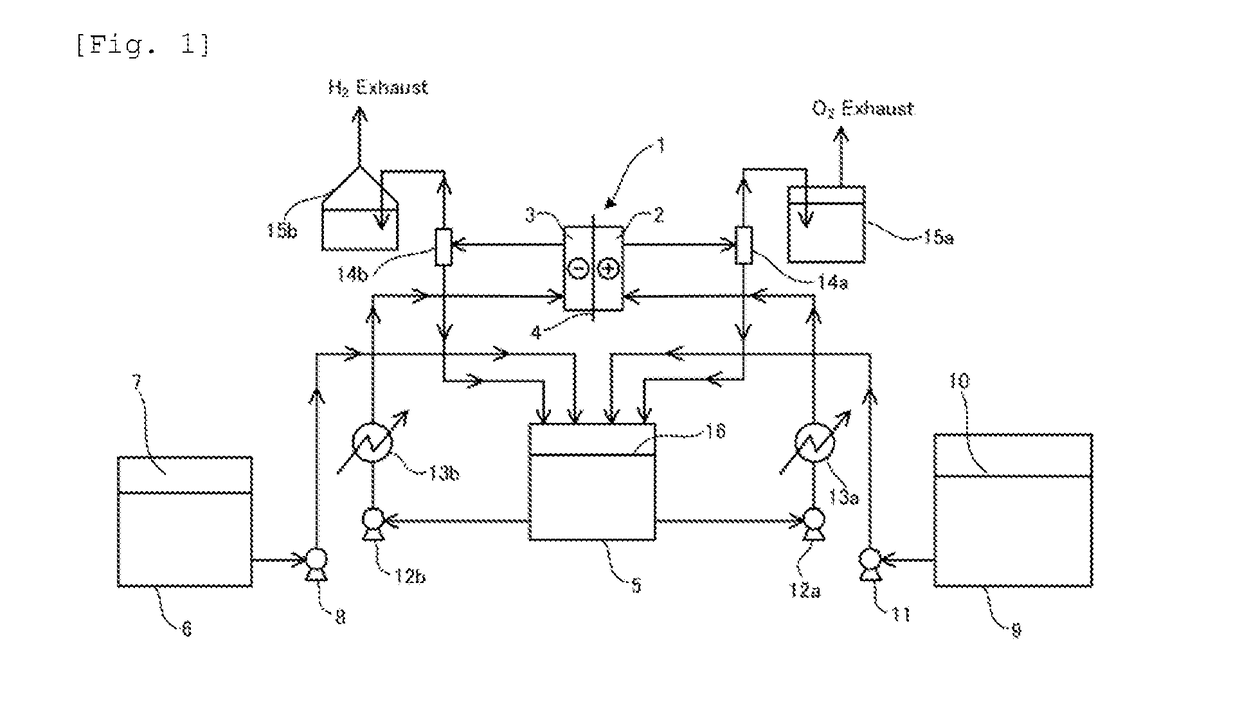Method for electrolyzing alkaline water
a technology of alkaline water and electrolysis method, which is applied in the direction of electrolysis components, electrolysis coatings, energy input, etc., can solve the problems of power loss, process may be hindered, and the performance of anodes may be affected, so as to achieve the effect of effective us
- Summary
- Abstract
- Description
- Claims
- Application Information
AI Technical Summary
Benefits of technology
Problems solved by technology
Method used
Image
Examples
example 1
[0103]A test was performed using an electrolyzer having an electrolytic area of 1.0 dm2. A conductive base member made of Ni was used to form the anode and the cathode respectively in the anode chamber (capacity: 400 mL) and in the cathode chamber (capacity: 400 mL). The anode was an expanded mesh (thickness 0.8×SW 3.7×LW 8.0) having an active anode coating coated on the surface thereof. The cathode was a fine mesh (thickness 0.15×SW 2.0×LW 1.0) having a noble metal-based active cathode coating coated on the surface thereof.
[0104]The anode catalyst material used was a NiCo2O4 active anode catalyst. The cathode catalyst material used was a Pt-based cathode catalyst having thermal decomposition activity.
[0105]The diaphragm used was a polypropylene-based film of 200 μm in thickness, and was interposed between the both electrodes to produce a zero-gap structure.
[0106]The test process was as illustrated in FIG. 1. The electrolysis temperature was controlled by a heater provided in a bott...
examples 2 to 6
[0112]Tests identical to the test of Example 1 were performed except that the materials illustrated in Table 1 were used as the catalyst activation material.
example 7
[0113]The same conductive base member as that of Example 1 was used in the anode and in the cathode. In Example 7, no catalyst was provided in advance on the surface of each of the conductive base members, but the surfaces were roughened by sandblasting.
[0114]These conductive base members were respectively used in the anode chamber 2 and in the cathode chamber 3, and a test similar to that of Example 1 was performed.
PUM
 Login to View More
Login to View More Abstract
Description
Claims
Application Information
 Login to View More
Login to View More - R&D
- Intellectual Property
- Life Sciences
- Materials
- Tech Scout
- Unparalleled Data Quality
- Higher Quality Content
- 60% Fewer Hallucinations
Browse by: Latest US Patents, China's latest patents, Technical Efficacy Thesaurus, Application Domain, Technology Topic, Popular Technical Reports.
© 2025 PatSnap. All rights reserved.Legal|Privacy policy|Modern Slavery Act Transparency Statement|Sitemap|About US| Contact US: help@patsnap.com


